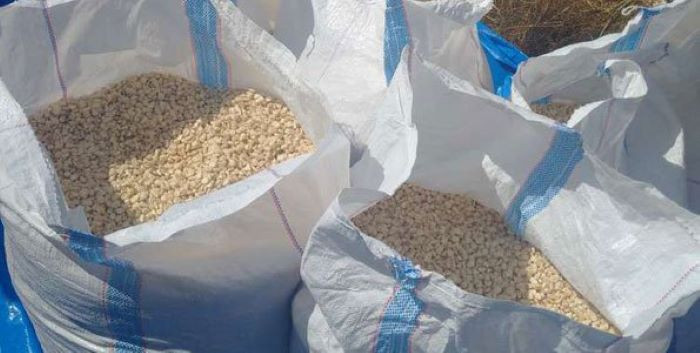
In recent years, agricultural financing has become topical in Zimbabwe for a number of reasons. Firstly, agriculture is a mainstay of the national economy, expected to contribute 11,6% to gross domestic product growth in 2012.
Secondly, the profile of the Zimbabwean farming community has changed significantly from a few thousand well-resourced farmers before the land reform programme to several hundreds of thousands of small-scale, resource-poor farmers who need all manner of support before they can achieve self-sustenance.
Thirdly, a constrained fiscal space means that government’s allocation of resources — in particular to agriculture which is a source of livelihood for up to 70% of the population — is subjected to close scrutiny by many anxious stakeholders.
Fourthly, the African Union Maputo Declaration of 2003 requires African governments to set aside 10% of their national budgets for agriculture. In this article I advance the argument that the extent and nature of financing which agriculture can attract is determined by the state of the sector.
And by default, the state of the sector is a result of deliberate, cumulative efforts — or lack thereof — emanating from the sector itself. Below, I outline four initiatives the sector should explore in 2012 in order to make agriculture more dynamic.
• Agricultural tourism The Tourism and the Hospitality Industry ministry has been working tirelessly to promote tourism and their efforts will culminate in the co-hosting of the United Nations World Tourism Organisation General Assembly by Zimbabwe and Zambia in 2013.
At the same time concerted efforts are being made (or should be made) by the Agriculture, Mechanisation and Irrigation Development ministry to revive the agricultural sector.
In my view, potential synergies exist for promotion of both agriculture and tourism through agricultural tourism. We have heard a lot about cultural tourism before, why shouldn’t 2012 be the year in which agricultural tourism comes to the fore?
- Chamisa under fire over US$120K donation
- Mavhunga puts DeMbare into Chibuku quarterfinals
- Pension funds bet on Cabora Bassa oilfields
- Councils defy govt fire tender directive
Keep Reading
Interestingly, I recently discovered the word “culture” comes from the Latin equivalent of “to cultivate land”. The beauty about agricultural tourism is the possibility of serving guests with food prepared from raw materials produced on the farm or in its vicinity and also of affording guests the opportunity to participate in the activities that take place around the farm.
When all is said and done, it would appear there is a thin line between agricultural tourism and cultural tourism, after all. Perhaps 2012 is the year our legislators will work with all interested stakeholders to develop an appropriate policy framework to support this sector. You ask why? Well, why not?
•Urban agriculture Half the human population now lives in cities and in sub-Saharan Africa, 15 million people are moving to cities each year, demographers say. By 2020 some 40 million Africans will depend entirely on food grown in cities.
It is estimated food purchases account for up to 80% of a typical urban family’s income, so even a small amount of food grown in the backyard alleviates financial stress. Urban agriculture owes its popularity to the fact that it requires little investment in terms of tillage, fertilisers and seed.
Currently, urban farmers just identify any open space they can find and plant crops on it. This land often belongs either to the government or private institutions, so the urban farmers have no land tenure security and this affects the kind of investment they are prepared to put into the agricultural venture and also gives them little incentive to make environmentally sustainable decisions in respect of the land they cultivate. So what should be done to support urban agriculture?
Efforts must be made to ensure urban farmers have sustainable access to the required inputs; they’re not impeded by public policies and city by-laws, but are aware of the environmental consequences of their farming activities and how to mitigate them.
• Value—chain approach to agricultural financing
Lack of collateral is amongst the biggest impediments to accessing finance by the smallholder farmers who now dominate the Zimbabwean farming landscape.
Strengthening existing value chains and developing new ones incorporating smallholder farmers can significantly improve their access to finance and other inputs.
A value-chain approach calls for a deeper understanding of the interdependencies along the value-chain. Contracts, links with other parties in the value-chain, technical assistance and insurance can form “soft” collateral which could be relied upon for lending purposes.
A value-chain approach to lending does not only rely on historical issues such as past investment, but is also informed by the promise and possibility of future success.
Lenders have to determine the productive value of the farm and make it the basis for advancing any lending to farmers.
• Sustainable agriculture While it is imperative to identify sustainable methods of agricultural production that slow down the damaging effects of climate change, Zimbabwe also needs to embrace sustainable agricultural practices in order to benefit from financing facilities targeted at such “green” practices. For instance in December 2011, the World Bank announced two new financial initiatives — the carbon initiative for development and the third tranche of the bio-carbon fund (BioCF T3) — to help the least-developed countries access financing for low-carbon investments and enable them to tap into carbon markets after 2012.
The BioCF T3 focuses on reforestation and agriculture projects that go hand in hand with co-benefits such as decreased soil erosion and increased land fertility.
The World Bank is a trustee of 12 carbon funds and facilities capitalised at $2,7 billion, which Zimbabwe can benefit from if it puts its sustainable agriculture ducks in a row.
What’s your take on these trends? Weigh in with your insights on [email protected].
•Omen N. Muza writes in his personal capacity. He is a banker and managing director of TFC Capital (Zimbabwe) (Pvt) Ltd.











